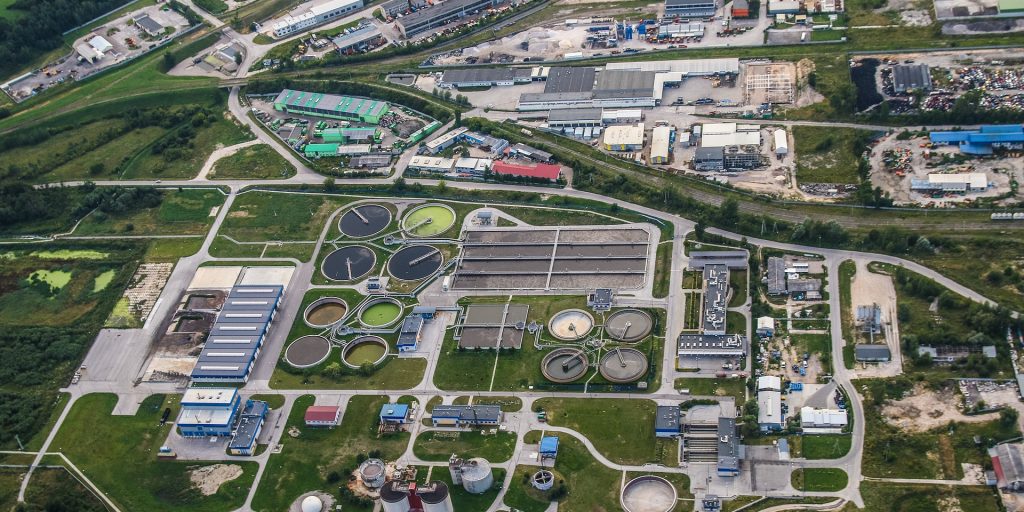Decentralized wastewater treatment systems projected to become more common as droughts persist
Last month, the Hoover Dam’s reservoir at the border of Nevada and Arizona sunk to its lowest recorded level ever—a visible sign that the southwestern United States is heading toward what scientists call a “megadrought.”
There’s no sign of it letting up anytime soon.
“This appears to be just the beginning of a more extreme trend toward megadrought as global warming continues,” reads an article published last year in the journal Science. Using a combination of hydrological modeling and tree rings, scientists found that the period from 2000 to 2018 was “the driest 19-year span since the late 1500s and the second driest since 800 CE.”
With water reserves at their all-time low (and not just in the southwest), municipal leaders are looking ahead and considering ways to better manage the water resources they have available. At least in part, that means a trend toward the installation of decentralized wastewater treatment systems (commonly referred to as septic or onsite systems), based on an analysis by California-based research and consulting firm Frost and Sullivan.
In coming years, these systems “will register a focused investment as part of smart city infrastructure to reduce the stress on centralized infrastructure,” said Paul Hudson, an energy and environmental research analyst at the firm. Treatment systems that can generate energy from waste are particularly “likely to have a high adoption rate in the next two to three years. The business model combines (wastewater treatment) with energy production from sludge, a wastewater byproduct,” Hudson noted.
Besides being an environmentally sustainable option, investing in a decentralized system can be economically smart, as they don’t require large capital costs, reduce maintenance expenses and promote jobs.
An information sheet from the Environmental Protection Agency highlights a particularly efficient and cost effective system in Loudoun County, Virginia that’s “financially self-sustaining via rates that cover expenses.” Specifically, the system includes a water reclamation facility, several small community clusters and purchased capacity from a centralized plant.
Developers build more clusters at their own expense as more houses are built.
Another innovative and sustainable treatment system managed by Rutherford County, Tennessee consists of “approximately 50 subdivision wastewater systems, all of which contain a (septic tank effluent pumping system), a recirculating sand filter, and a large effluent drip dispersal system.” It allows for subdivisions to be built where they otherwise couldn’t be constructed either because city sewer isn’t available or the soil isn’t conducive to conventional septic tanks.
“Where they are determined to be a good fit, decentralized systems help communities reach the triple bottom line of sustainability: good for the environment, good for the economy, and good for the people,” the sheet notes.
In relation to this projected trend of America’s wastewater infrastructure toward decentralized systems, a bill that’s currently being considered in the Senate would allot millions of dollars for such projects. “The Decentralized Wastewater Grant Act” was introduced in June by U.S. Rep Terri Sewell, of Alabama, and included in the INVEST in America Act, which was successfully passed in the House earlier this summer.
According to a press release from Sewell’s office, the bill calls for the creation of a grant program under the Clean Water Act (overseen by the Environmental Protection Agency) to help “low- and moderate-income households connect their homes to existing wastewater infrastructure or install or upgrade individually owned decentralized wastewater systems.”
The bill would make available $100 million for decentralized wastewater projects each fiscal year from 2022 through 2026, totaling $500 million.
“Access to clean water and adequate wastewater infrastructure are basic human rights,” said Sewell in a prepared statement. “For too many rural communities in my district and across the country, failing wastewater infrastructure has created serious health, economic, and environmental hazards. … The Decentralized Wastewater Grant Act will make it more affordable for families to connect their homes to existing wastewater systems or install quality septic systems of their own.”
Notably, along with the allotment for decentralized systems, the INVEST in America Act proposes substantial investment in America’s drinking water and wastewater systems, among other things.
These include assistance programs such as:
- $53 billion: Drinking Water State Revolving Fund
- $45 billion: Fully replace lead service lines nationwide
- $5 billion: Assistance for local water systems to clean up PFAS contamination
- $4 billion: Reduce and eliminate water utility debts incurred since March 2020
- $8 billion: Federal low-income water assistance programs
Wastewater Infrastructure including:
- $40 billion: Clean Water State Revolving Fund
- $2 billion: Grants to municipalities to capture, treat, or reuse sewer overflows or storm water
- $2.5 billion: Grants for state water pollution control programs
- $1 billion: Clean water pilot programs and projects for climate resiliency
- $1 billion: Alternative water source projects, such as wastewater or storm water reuse, to augment the existing water supplies
- $1 billion: Clean Water Act grants to municipalities to implement treatment standards for PFAS and other emerging contaminants
- $2.5 billion: Wastewater infrastructure assistance to address backlog of needs for Indian Tribes




















